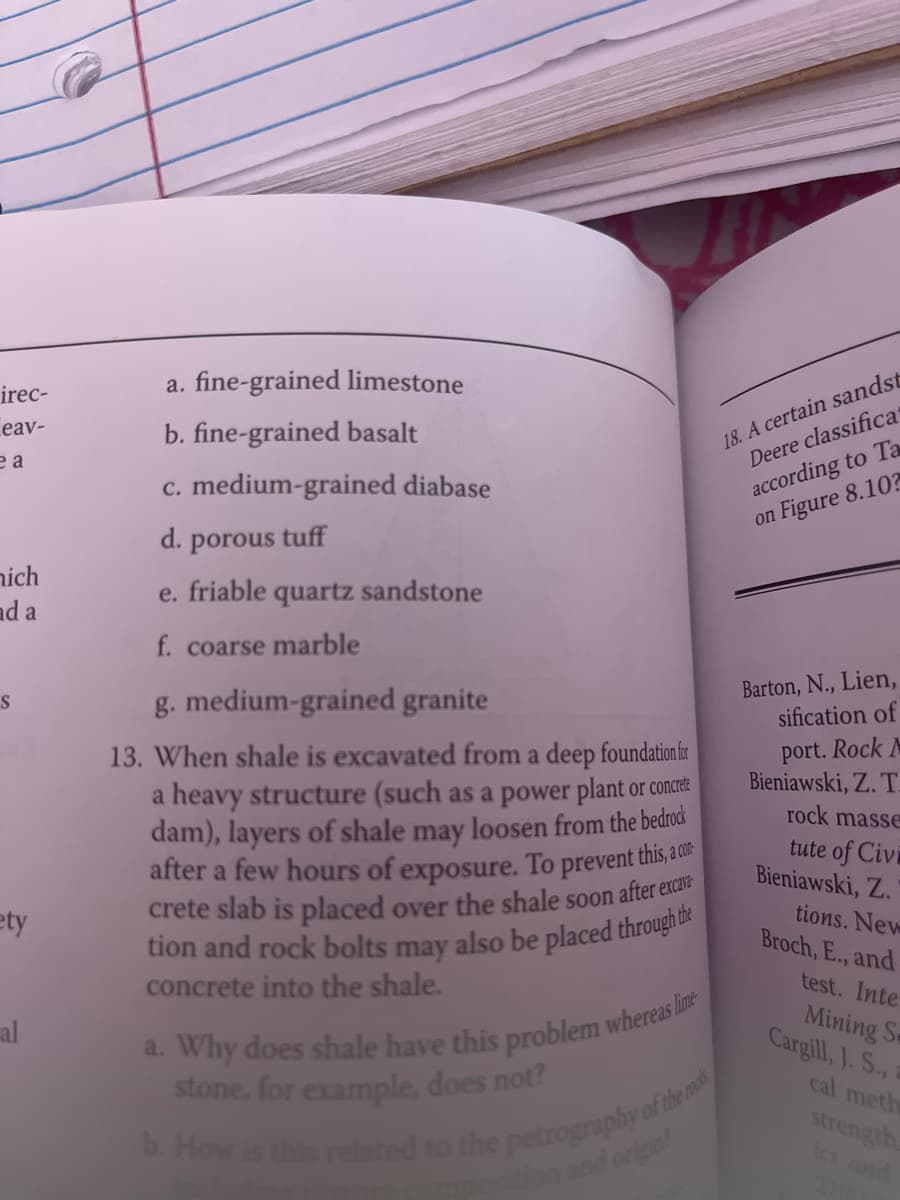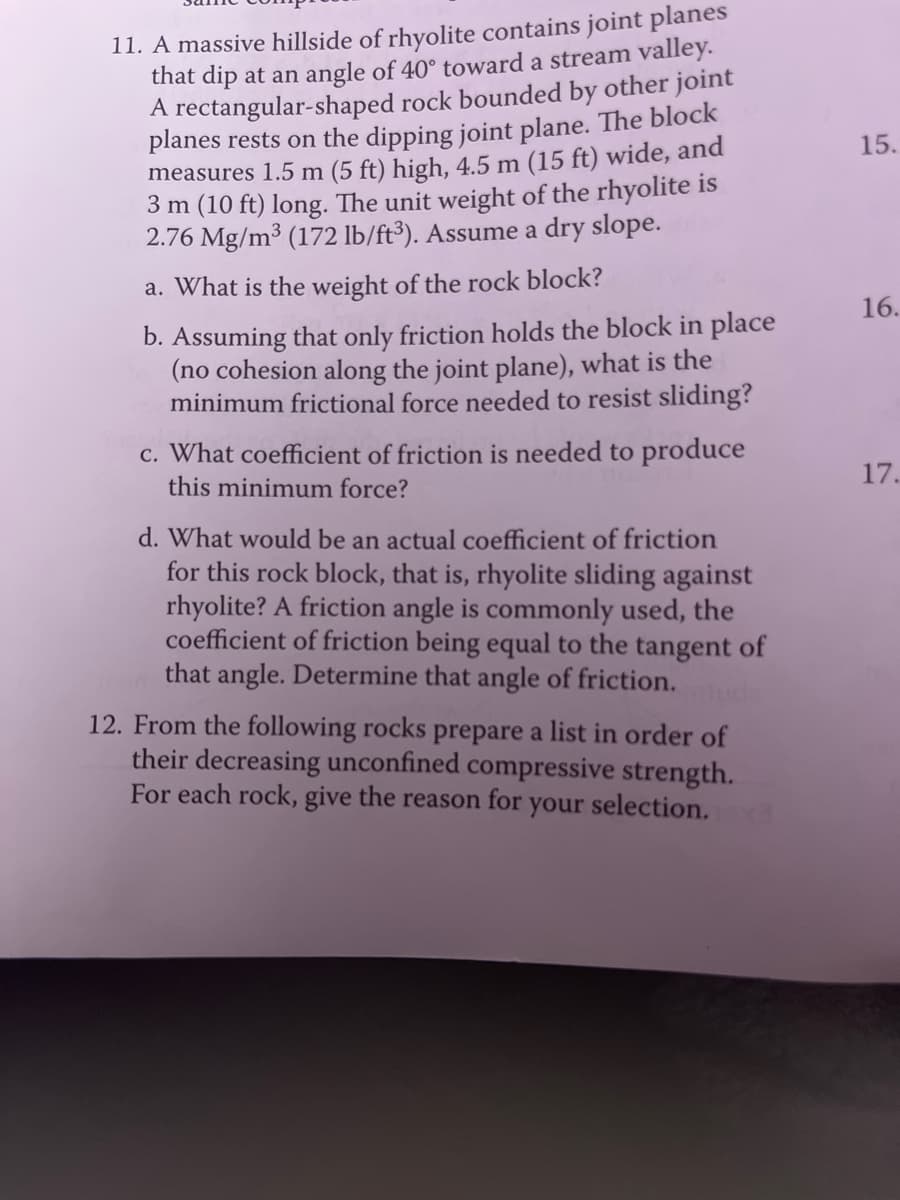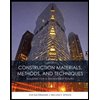From the following rocks prepare a list in order of their decreasing unconfined compressive strength. For each rock, give the reason for your selection.
From the following rocks prepare a list in order of their decreasing unconfined compressive strength. For each rock, give the reason for your selection.
Principles of Foundation Engineering (MindTap Course List)
9th Edition
ISBN:9781337705028
Author:Braja M. Das, Nagaratnam Sivakugan
Publisher:Braja M. Das, Nagaratnam Sivakugan
Chapter9: Settlement Of Shallow Foundations
Section: Chapter Questions
Problem 9.6P
Related questions
Question
Question 12

Transcribed Image Text:irec-
eav-
e a
nich
ad a
S
ety
C
al
a. fine-grained limestone
b. fine-grained basalt
c. medium-grained diabase
d. porous tuff
e. friable quartz sandstone
f. coarse marble
g. medium-grained granite
13. When shale is excavated from a deep foundation for
a heavy structure (such as a power plant or concrete
dam), layers of shale may loosen from the bedrock
after a few hours of exposure. To prevent this, ac
crete slab is placed over the shale soon after excare
tion and rock bolts may also be placed through the
concrete into the shale.
a. Why does shale have this problem whereas lime
stone, for example, does not?
b. How is this related to the petrography of the rods
position and origin?
18. A certain sandst
Deere classifica
according to Ta
on Figure 8.10?
Barton, N., Lien,
sification of
port. Rock M
Bieniawski, Z. T
rock masse
tute of Civi
Bieniawski, Z.
tions. New
Broch, E., and
test. Inte
Mining Se
Cargill, J. S.,
cal meth
strength
2716

Transcribed Image Text:11. A massive hillside of rhyolite contains joint planes
that dip at an angle of 40° toward a stream valley.
A rectangular-shaped rock bounded by other joint
planes rests on the dipping joint plane. The block
measures 1.5 m (5 ft) high, 4.5 m (15 ft) wide, and
3 m (10 ft) long. The unit weight of the rhyolite is
2.76 Mg/m³ (172 lb/ft³). Assume a dry slope.
a. What is the weight of the rock block?
b. Assuming that only friction holds the block in place
(no cohesion along the joint plane), what is the
minimum frictional force needed to resist sliding?
c. What coefficient of friction is needed to produce
this minimum force?
d. What would be an actual coefficient of friction
for this rock block, that is, rhyolite sliding against
rhyolite? A friction angle is commonly used, the
coefficient of friction being equal to the tangent of
that angle. Determine that angle of friction.
12. From the following rocks prepare a list in order of
their decreasing unconfined compressive strength.
For each rock, give the reason for your selection.
15.
16.
17.
Expert Solution
This question has been solved!
Explore an expertly crafted, step-by-step solution for a thorough understanding of key concepts.
This is a popular solution!
Trending now
This is a popular solution!
Step by step
Solved in 2 steps

Knowledge Booster
Learn more about
Need a deep-dive on the concept behind this application? Look no further. Learn more about this topic, civil-engineering and related others by exploring similar questions and additional content below.Recommended textbooks for you

Principles of Foundation Engineering (MindTap Cou…
Civil Engineering
ISBN:
9781337705028
Author:
Braja M. Das, Nagaratnam Sivakugan
Publisher:
Cengage Learning

Construction Materials, Methods and Techniques (M…
Civil Engineering
ISBN:
9781305086272
Author:
William P. Spence, Eva Kultermann
Publisher:
Cengage Learning

Principles of Foundation Engineering (MindTap Cou…
Civil Engineering
ISBN:
9781337705028
Author:
Braja M. Das, Nagaratnam Sivakugan
Publisher:
Cengage Learning

Construction Materials, Methods and Techniques (M…
Civil Engineering
ISBN:
9781305086272
Author:
William P. Spence, Eva Kultermann
Publisher:
Cengage Learning